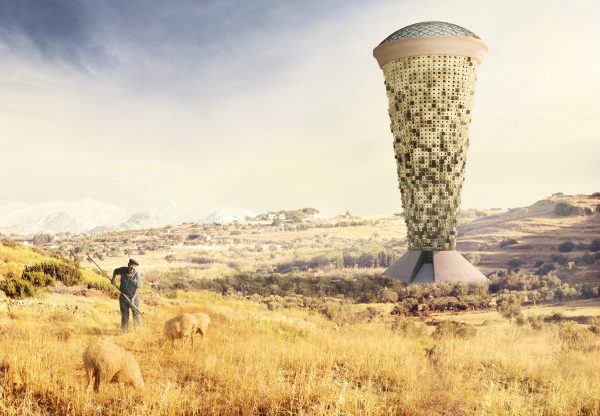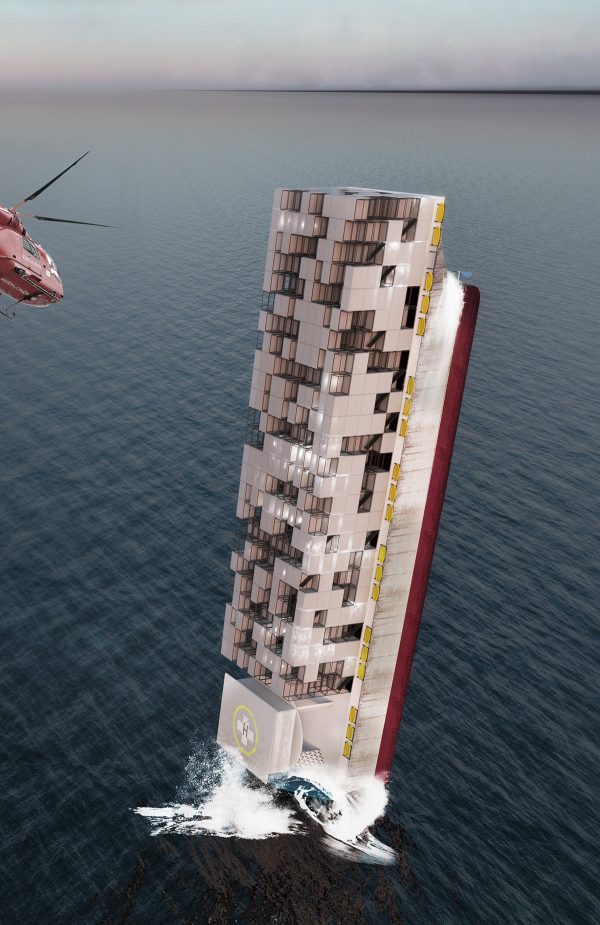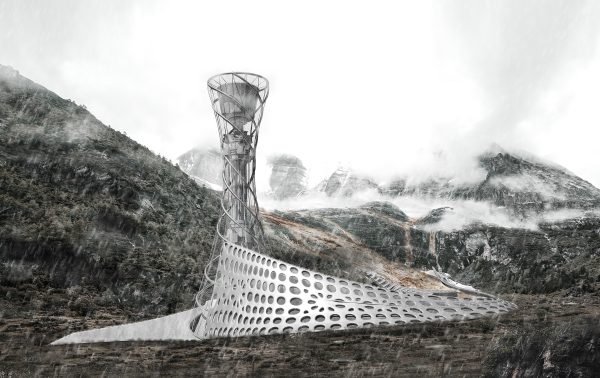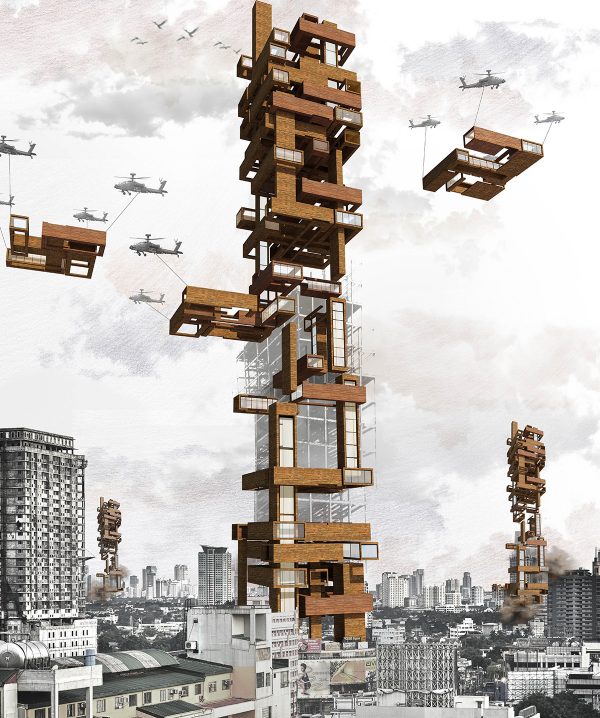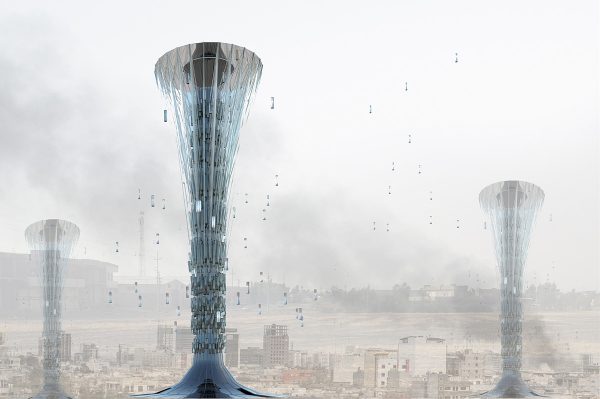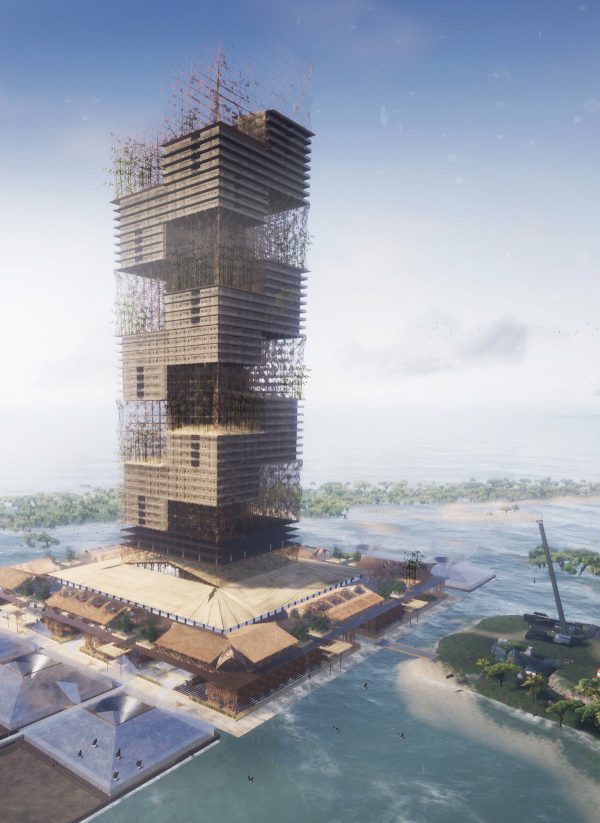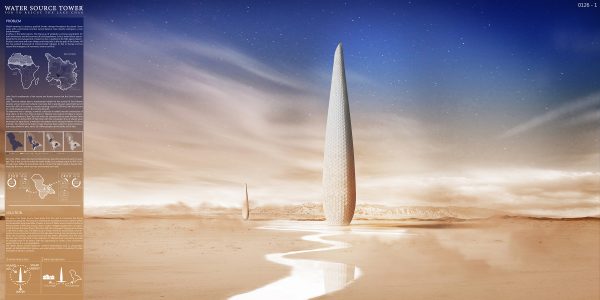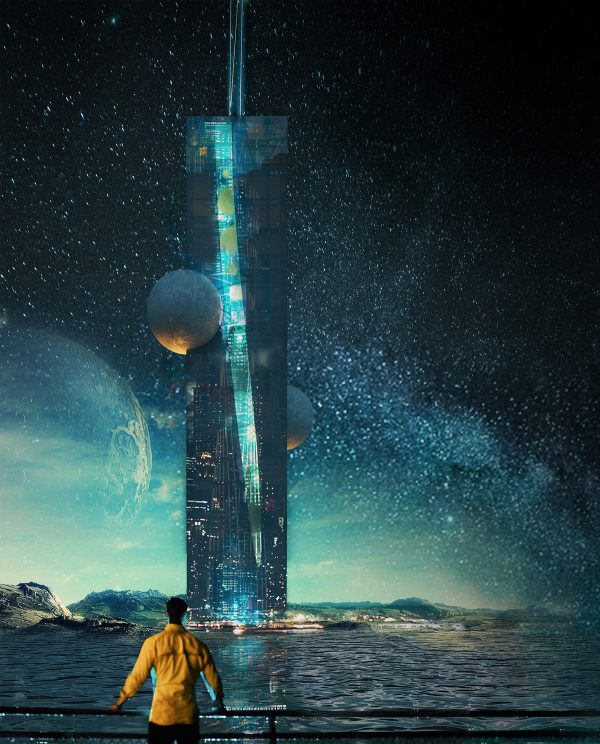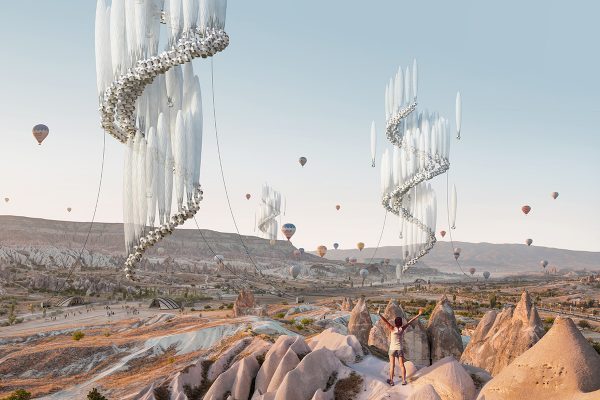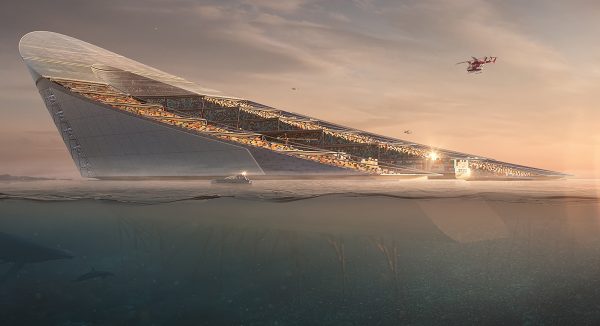Editors’ Choice
2019 Skyscraper Competition
Spyridon Koutantzis
Greece
Concept & Context
The project’s name – Mediterraneo – derives from its geographical namesake, the Mediterranean Sea, thus signifying a search for locality in an everchanging place. It studies the past of a rich in history area, in the effort to define its future. While doing so, it attempts to cope with the growing “temporal rental housing crisis” the European South is facing with an increasing number of people each year facing eviction, unable to find a home, in a market that favors visitors over inhabitants.
Form
The process of form-finding is a constant dialogue between the past and the future. It studies the vernacular architecture and transcribes its vital elements in the vertical axis. The insular staircase, the small opening, the variability of the pre-industrial built environment, the social interaction. All of the integral parts of the Mediterranean culture are being reimagined in a futuristic way that respects the landscape and creates the place.
Function
The program for the proposed tower is rather simple, not unlike that one of a village. It consists of a well-defined entrance area, a vertical promenade adjacent to which lay the habitable space and a social hub. While the floor plans are indicatory, the structural system offers to the building unique flexibility in terms of use, allowing a bottom-up approach for that matter. On top, lies a lifted social interaction space (plaza), getting abundant light from a glass dome and allowing people to enjoy a scenic view of the surrounding landscape. The boundaries between private and public spaces are blurred, since the promenade itself acts as a daily interaction space as well, communicating with the “front stoop” urban typology. Read the rest of this entry »

